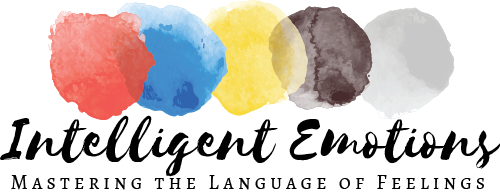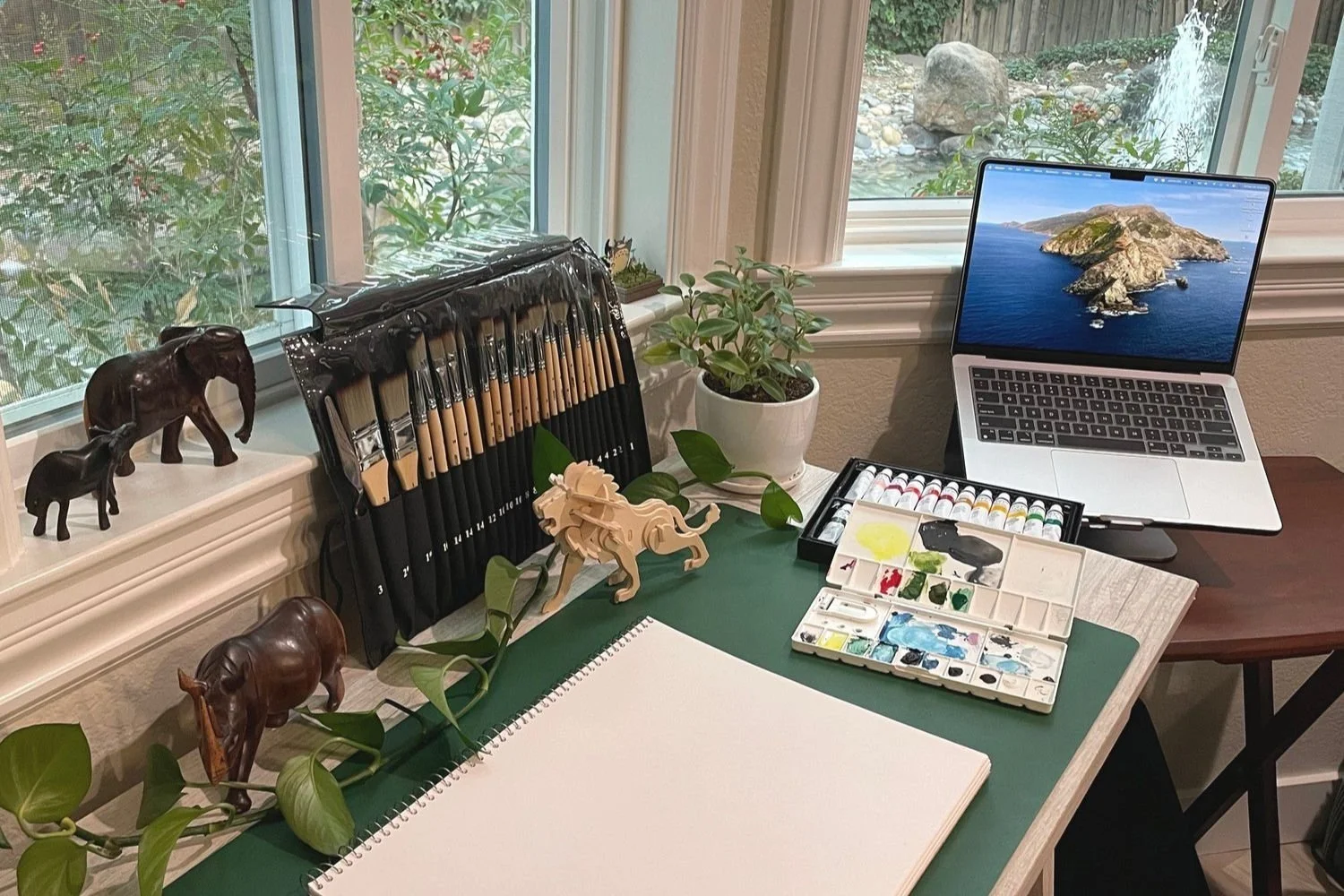6 Simple Steps for Highly Sensitive Persons to Grow Beyond Navel Gazing
In this blog, you’ll learn about the habit of navel gazing — namely, the deep dive that Highly Sensitive Persons do into their rich and complex inner world to the point of getting disconnected from the outer world.
This is Part 2 of a 4-part series on the Highly Sensitive Person’s emotional habits.
In Part 1 (The Highly Sensitive Person and the 3 Emotional Habits that Make Them Stumble), I talked about the 3 emotional habits that (when overly done), really knock HSPs off balance in their personal, relational, and professional arenas:
Navel gazing (Part 2)
Absorbing others’ feelings (Part 3)
AIM x 6, but rarely FIRE (if at all) (Part 4)
These are not BAD HSP traits per se, but they can be OVERLY relied on at our expense because that’s what we default to. When all you have is a hammer, everything looks like a nail.
You don’t need to throw away the hammer (it still has its uses!), but you would be much better off if you had additional tools.
Need help with protecting your emotional equilibrium? Grab this handy chart and write down these affirmations for emotional balance!
The Meaning of Navel Gazing
Compared to non-HSPs, Highly Sensitive Persons often have body postures that are curled inward (literal navel gazing): back hunched, shoulders curled inward, head down, eyes avoiding contact with others.
We make ourselves small and invisible, whereas non-HSPs tend to take up space with a straight spine, open chest and direct eye contact.
Instead of looking at the world OUT THERE, HSPs tend to look at the world IN HERE.
The Depth of Processing (D) trait leads Highly Sensitive Persons to put a ton of emphasis on abstract existential themes like meaning, significance, authenticity, integrity and less on concrete things like what’s physically and literally happening in front of us.
Contrary to the desire for HSPs to find meaning in EVERYTHING, sometimes there ISN’T a whole lot of meaning to what we’re experiencing. There isn’t always a hidden “message” written in the clouds, and we’re not necessarily being targeted or singled out when someone cuts us off on the freeway.
Sometimes things… just happen, with no particular rhyme or reason. A pen is a pen, and a stray cat that shows up is just a cat. Period.
Our vibrant imagination (that’s often bored with mundane reality) pulls us into thinking they’re divine signs or messengers, but sometimes that deludes us into thinking that the world we literally see isn’t as real (or meaningful) as the world we figuratively see.
The Feelings Behind Navel Gazing
Compared to non-HSPs, Highly Sensitive Persons tend to embellish certain emotions like sadness, melancholy, anxiety, guilt, or shame because:
These are connected to existential themes like meaning & purpose.
They tell me who I am or what matters to me.
They’re just familiar.
It’s easier to stay in these feelings because I can do them solo.
They feel safe because I can feel them on the inside without showing it on the outside.
(These feelings are also connected to the navel gazing physical body posture. Try to be mad or happy while in the fetal position - see how hard that is compared to feeling sad or scared.)
We often tend to avoid other feelings like joy, numbness, or anger for various reasons:
Vigilance - “When’s the other shoe going to drop?”
Numbness is shallow, meaningless, bland, inauthentic, and boring (and BORING is BAD).
Anger is dangerous and BAD (Let’s break that myth). I’m going to get into trouble if I feel this powerful loud feeling.
(Anger and joy also come with literally being present outside yourself and looking straight ahead. Try being sad or scared with a straight spine + open chest, looking straight ahead - see how difficult that is.)
Playing Favorites with Feelings
When we label certain emotions as GOOD to favor and others as BAD to avoid, it’s not as if those “BAD” feelings go away. They just go underground until the pressure cooker builds up and either leaks or explodes.
Buried anger becomes resentment that strains relationships or amplifies your guilt & shame.
Buried joy becomes resignation and/or guilty pleasures that are often addictive and take on a life of its own.
Buried numbness overloads your nervous system, leading you to feel numb anyway (aka burnout, physical sickness, depression)
Pushing away those “lighter, simpler, airier, brighter, expressive” feelings only backfires, leading to more issues that didn’t need to happen.
(Btw, this the Emotional Vortex - when one feeling sets off a chain reaction to a bunch of other feelings. Learn more in the BIG Feelings Masterclass.)
“Why So Serious?”
HSPs often are the classic “old souls”. We are “born old” and often feel out of sync with our peers.
Because our sensitivity leads us to be (sometimes overly) empathic, conscientious, and responsible, Highly Sensitive Persons tend to experience our early years like grownups in kid bodies. We end up living like 40-60 year olds all throughout life, often completely skipping childlike experiences of simplicity, innocence, openness, play, and fun.
We might plaster on smiles out of people pleasing or placating tendencies, but we can feel exhausted doing so. There’s a sadness that is right under the surface because we feel like we have to MAKE ourselves fit in (if we want to at all), otherwise we’re outsiders or misfits.
Because of our focus on existential, abstract concepts, often those around us look at us funny, saying:
“What are you talking about?”
“Why are you so serious?”
“Stop making a big deal.”
“You’re weird.”
When we dare to share how we feel – lonely, lost, purposeless, misunderstood – others respond with:
“What do you mean you don’t belong?”
“Just have fun! Lighten up.”
“Why can’t you just _____?”
This sense of difference and isolation often makes HSPs feel SHAME:
Something is clearly wrong with me, because I’m not like the others.
I don’t fit in, and I’m not interested in what they’re interested (and vice versa).
Not only do Highly Sensitive People often FEEL shame (partly because we are in a SHAMING environment), but shame itself further ISOLATES us.
…and back into the inner echo chamber of navel gazing we go.
How to Grow Beyond Navel Gazing
So how do Highly Sensitive Persons stop navel gazing and get out of this loop? Here are 5 concrete steps to grow beyond your navel gazing tendencies (pick one for the week):
Focus outside yourself.
Take things literally.
Be a kid.
Sit up straight and open your chest.
Look straight ahead or up.
Practice MAD & GLAD.
1) Focus Outside Yourself
Just a head’s up – What I’m gonna say next is going to SOUND like,
“Fake it ‘til you make it.”
This might feel internally grating for your HSP ears precisely because of the emphasis on truthfulness, authenticity, and meaning.
In actuality, what I’m recommending is more,
“Live it ‘til you believe it.”
Yes, there are some actual key differences in the experiences of Highly Sensitive Persons and Non-HSPs. You aren’t making it up – your experiences are definitely real…it’s just that this is only PART of the picture.
As revealed by the Indian story, “The Blind Men and the Elephant”, the perspectives we all have ARE real, but just not the WHOLE truth.
Where we direct our attention tells us what we see. It also tells us what we DON’T see (namely what’s in our blindspots).
What HSPs focus on:
The figurative, metaphorical, abstract
The world inside or beyond
The fine intricacies & nuances (so many layers)
Complicated
The emotional
Possibilities
The existential - meaningful, purposeful, deep
SAD, SCARED
What HSPs miss:
The literal & concrete
The world outside
The big picture, superficial, solid (what you see is what you get)
Simple
The material
Actualities
The practical - physical, actionable, immediate
MAD, GLAD
Yes, our inner world is very rich, but so is the outer world. You need a connection to BOTH to be whole.
Instead of disconnecting from the outer world, dismissing others for being superficial, and going hermit-mode in your inner universe, stay OUTSIDE yourself for a bit longer than you’re used to — every minute helps.
Suspend any judgments you might have on others being “shallow” – perhaps they’re actually experiencing another form of richness in life you’ve been depriving yourself of because it doesn’t “feel” significant.
2) Take things literally.
Practice taking things (even these 6 growth steps) LITERALLY, not (just) figuratively. Sometimes life does give us signs in mysterious ways. It’s just not ALL the time.
Use your superpower of the 5 senses: sight, hearing, touch, smell, & taste. Focus on what an object IS, not what it COULD BE or SHOULD BE. An apple is an apple. Period. This particular apple is red and yellow, bigger than that specific orange. Keep it simple — don’t read more meaning into it.
When you do this more often, you open yourself up to actually receiving actual meaningful messages, rather than getting distracted by false positives or false negatives.
3) Be a Kid.
The most fun way to be less introspective is to let yourself be a kid. Give yourself the childhood you (probably) skipped for whatever reason. Observe how a 2-year-old is.
What’s she like?
What does she notice?
How does she react?
What does she think about? (Probably not a whole lot about the deeper meaning of life.) DOES she think?
What does she feel? (It’s probably the full range of emotions - MAD, SAD, GLAD, SCARED. NUMB is when she’s tired or maxed out).
What does she DO with her feelings? Does she HOLD IT IN? Or LET IT OUT unfiltered?
What does she do? (Not very deliberately planned out but more PRIMAL, instinctual, reflexive. Simple).
Do as the 2-year-old does. Go OUTSIDE yourself and see the OUTER world with openness, wonder, awe, and curiosity. See what happens next.
Elaine Aron says in her book “The Highly Sensitive Person” to treat our physical bodies as if they were an infant’s body - being very gentle, tender, and nurturing.
I wonder if the “treat yourself like a young one” also applies to our outlook on life.
4) Sit/Stand Up Straight, Open Chest
Your head, heart, and body are super interconnected. The emotional habits of HSPs are partly reinforced by our body postures. Ergonomics matter!
Modern-day life with laptops and phones only reinforces the navel gazing, shoulder-slumped posture that Highly Sensitive Persons have (and you wonder why you struggle with imposter syndrome or perfectionism-induced shame?) Reverse that!
Change your workstation or furniture so that you’re more likely to sit up straight instead of hunched over.
Swap out your chair for an exercise ball or desk for a standing one.
Do some heart opening yoga positions — lay down on the floor with a pillow underneath your spine so that your chest is pushed up/forward. Notice how you feel!
Part of the peace, ease, and steadiness that comes from having a straight spine and open chest comes from you being able to BREATHE more deeply — doing deep belly rather than shallow top-of-chest breathing.
Tons of HSPs tend to also be breath-holders, forgetting to breathe from being so focused that when the body catches up on the breath in rapid, shallow spurts, sometimes this by itself can trigger hyperventilation.
So straight spine, open chest — a clear pathway for the breath to soothe your nervous system more regularly. (What would this do for your feelings?)
5) Look straight ahead or up.
For the same reason, looking literally straight ahead (maybe up) would also offset the HSP lean towards the feeling of sadness or fear.
Power postures (aka the Superman/Wonder Woman poses) stir up feelings of CONFIDENCE partially because of the straight spine/open chest combo, but partially also because of the eyes looking forward. The body gears up, ready to engage the challenge ahead.
The laidback CEO posture (leaning back in the chair, hands behind the head, feet kicked up) stirs up feelings of inspiration, openness, and curiosity because the eyes are looking up into the vast expanse of the sky/ceiling rather than the cramped terrain beneath your feet.
Socially, looking down or avoiding eye contact reinforces feelings of shame, inferiority, or awkwardness because it’s disengaged and distancing.
Cultural reasons aside (i.e., direct eye contact is disrespectful in some contexts), looking directly at others around you with more eye contact and smiles signals to your body that you DO belong and you ARE connected.
You’re not lesser than others or outside of the group. You are an equal and belonging member of the collective.
(If you’re not sure of this, try this out with strangers you pass by the store, lightly smile at them and see whether they react more positively or negatively.)
Here’s a fun quote:
Live with the confidence of a mediocre old white man.
How does he sit? Talk? walk? I wonder why he feels so confident.
6) Practice MAD & GLAD.
Straight spine + open chest + eyes forward = MAD + GLAD postures.
These are body positions we do naturally when we feel angry or happy. But because Highly Sensitive Persons have labeled MAD & GLAD as BAD, we lock up the whole experience in our mind, heart, and body.
With Steps 4 & 5, we reversed the body portion. Here are two blogs about our inner thoughts about anger and joy:
As a whole being and part of the human race, we, too, already have access to the experience of anger and joy. Instead of judging yourself for feeling MAD or GLAD, give yourself PERMISSION to feel that way.
If anger feels too scary or threatening for right now, start with joy. Anger and joy go hand in hand as the emotions of DESIRE, so practicing your joy muscle will help you nurture the anger one as well.
Reverse the Navel Gazing: Growth Steps
Here are the 6 simple steps for Highly Sensitive Persons to grow beyond the emotional habit of navel gazing:
Focus outside yourself.
Take things literally.
Be a kid.
Sit/stand up straight, open chest.
Look straight ahead or up.
Practice MAD & GLAD.
Bookmark this blog as your growth work for the next three months! Pick ONE step to do each week — whichever gives you the lowest hanging fruit. The others will naturally follow, so it doesn’t matter where you start.
These are SIMPLE, but not necessarily EASY. It’s okay if these feel hard to do. Do your best little by little and get some practice under your belt.
When you reverse the posture of navel gazing, you will expand your life horizons to experience the greater riches of life beyond your inner world!
Other Emotional Habits of Highly Sensitive Persons
The 3 emotional habits when overly done that make Highly Sensitive Persons stumble in our personal, relational, or professional arenas are:
Navel gazing (Part 2)
Absorbing others’ feelings (Part 3)
AIM x 6, but rarely FIRE (if at all) (Part 4)
After 3 months, pick one of the other two, rinse & repeat!
The BIG Feelings First Aid Kit
Messy feelings spilling out at the WRONG TIME, WRONG PLACE, WRONG WAY?
Grab this free PDF guide that shows you how to handle feelings like a pro so that you can keep moving forward in life!
If you like this post, Pin it to Pinterest!
Other Blogs on Highly Sensitive Persons
© Copyright 2023 Joanne Kim. All rights reserved.
Joanne Kim, Feelings Translator
Hi! I’m a therapist-turned feelings coach who helps Highly Sensitive Persons, Empaths, Enneagram 2s & 4s, etc. turn their BIGGEST feelings into their GREATEST superpower!
They are often the first (or only) person in their family to intuitively process and express feelings; consequently, they are often judged or criticized so that they learn to people please, placate, or perform until they hit a wall.
They’re super familiar with anxiety, guilt, and shame, partly because of an allergic reaction to anger (theirs and others').
Often the super responsible, empathic, and ethical person in their environments, they reach out to me after they're already burned out, resentful in their relationships, or sucked into their shame spiral.
The most common feedback I get from people when I share about how feelings work is,
"Why didn't anyone teach me this in school??"
Hence, I am building a school helping people work WITH their feelings so their feelings work FOR them.




































You may feel sometimes like you’re going in circles - expending so much energy, time, and resources to change, only to find yourself in the same place all over again. As more time goes on, you feel like the future is bleak - what’s the point of trying, if it’s going to be the same? Perhaps what’s the issue is not what’s happening but how you perceive what’s happening. What if you ARE actually changing?